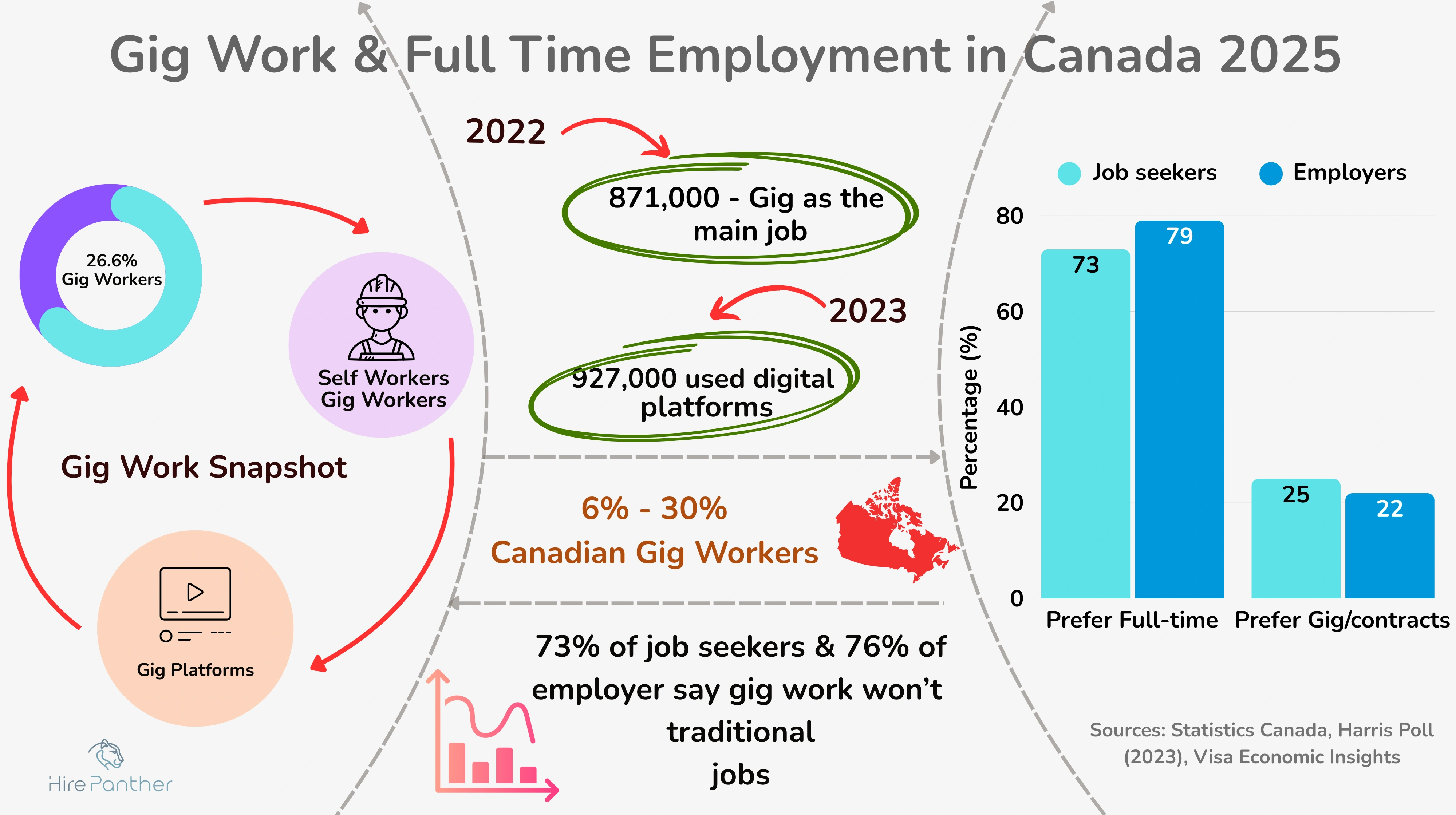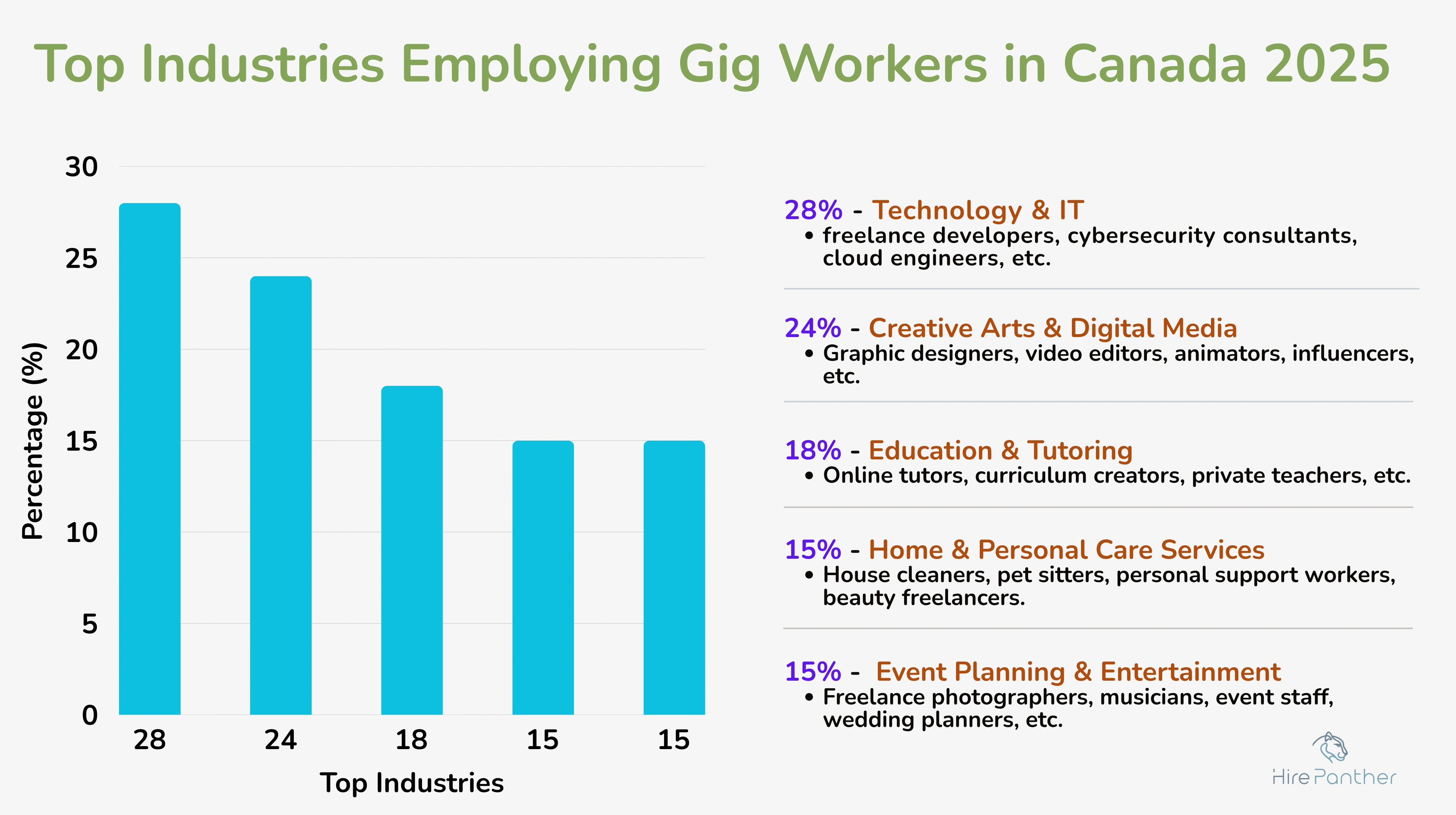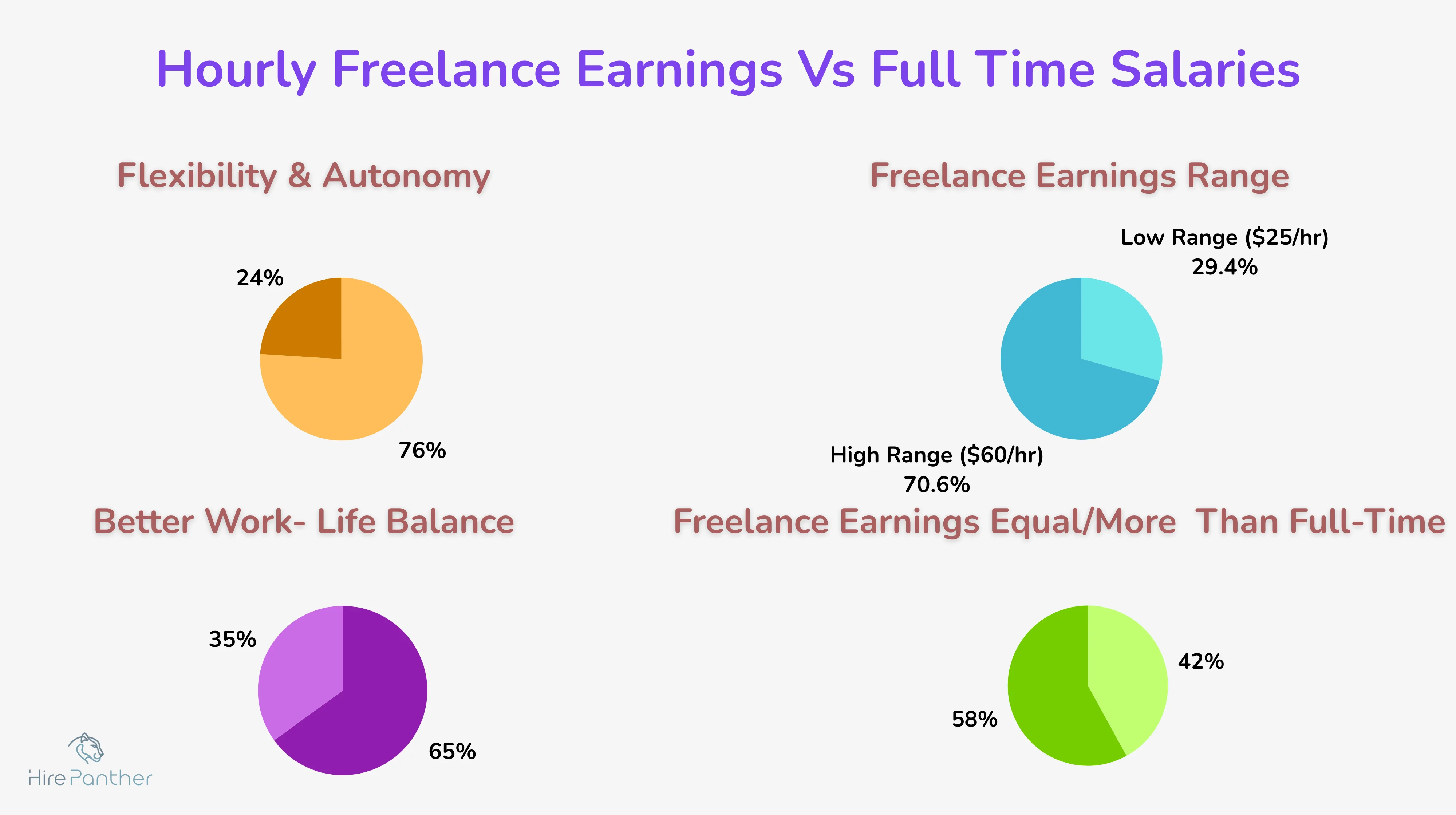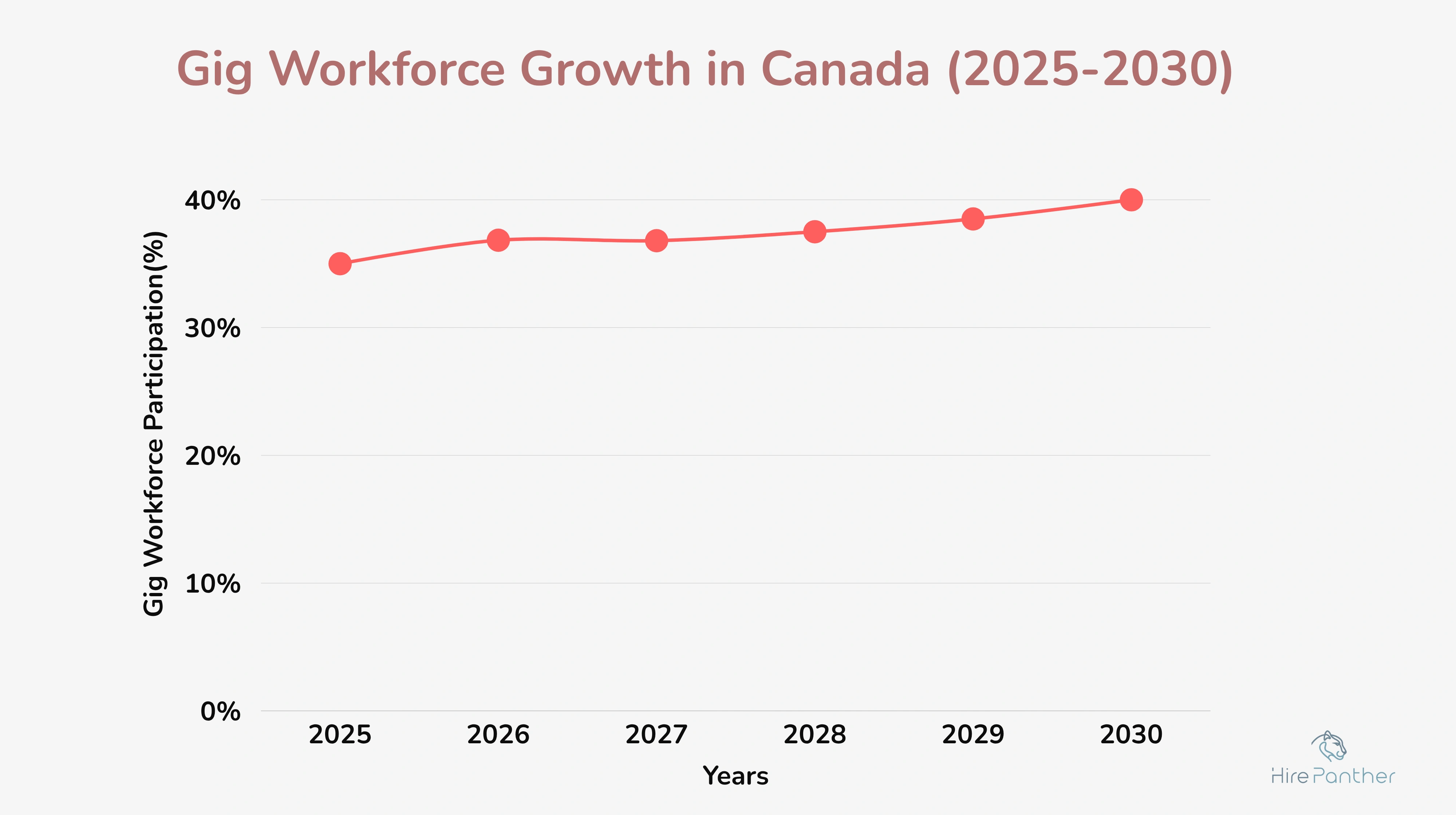Gig Work Statistics: How Many Canadians Prefer Freelance Over Full-Time?
- 05 Aug, 2025

Canadian Workforce at a Glance in 2025
The Canadian workforce has significantly evolved, with gig and freelance work becoming preferred employment options for many. But exactly how many Canadians now favor freelance work over traditional full-time roles?
In this article, we’ll dive into comprehensive gig work statistics, shedding light on current preferences, demographics, and the factors driving this shift.

Key Gig Work Statistics for Canada in 2025
Overall Participation in Gig Work
As of 2025, approximately 35% of the Canadian workforce actively participates in gig or freelance work, marking a notable rise from previous years.
Demographic Breakdown
- Millennials & Gen Z: 48% prefer freelance or gig work.
- Generation X: 32% engaged in gig work.
- Baby Boomers: 20% participating in freelance projects.
Top Industries for Gig Work in Canada
- Technology and IT
- Creative Arts & Digital Media
- Education & Tutoring
- Home & Personal Care Services
- Event Planning & Entertainment

Freelance vs. Full-Time: What Canadians Prefer and Why
Flexibility and Autonomy
A primary reason Canadians choose gig work is the flexibility it offers. 76% of freelancers cite the ability to manage their own schedule and workload as the most significant advantage.
Work-Life Balance
65% of Canadian gig workers report improved work-life balance compared to traditional employment, attributing lower stress levels and better mental health to freelance flexibility.
Financial Opportunities and Earnings
- Average hourly earnings for freelancers in Canada range between CAD $25–$60, depending on the industry.
- 42% of gig workers earn equal or higher incomes compared to full-time employees in similar roles.

Factors Influencing Gig Work Preference
- Technological Advancements: Online platforms and mobile apps have simplified finding and managing freelance opportunities, directly influencing the growth of gig employment.
- Economic Factors: Post-pandemic economic fluctuations have prompted many Canadians to diversify income sources through freelance or gig work.
- Cultural Shifts: Younger generations increasingly value independence, personal growth, and variety, aligning closely with freelance opportunities.
Challenges Facing Canadian Gig Workers
Despite the appeal, gig workers still face challenges, including:
- Inconsistent income streams
- Lack of traditional employment benefits
- Increased competition in popular sectors
The Future: Projected Growth and Opportunities
Industry analysts predict continued growth in Canadian freelance participation, reaching nearly 40% by 2030. This growth will primarily occur in digitally enabled sectors, highlighting the importance of robust digital infrastructure and supportive freelance platforms.
Conclusion: Embracing the Gig Economy
The statistics are clear—gig work is not merely a temporary trend but an integral part of Canada’s workforce evolution. Understanding these statistics helps individuals, businesses, and policymakers adapt to this changing employment landscape effectively.
Want to stay informed about Canada’s gig economy? Subscribe for more insightful articles and trends!

